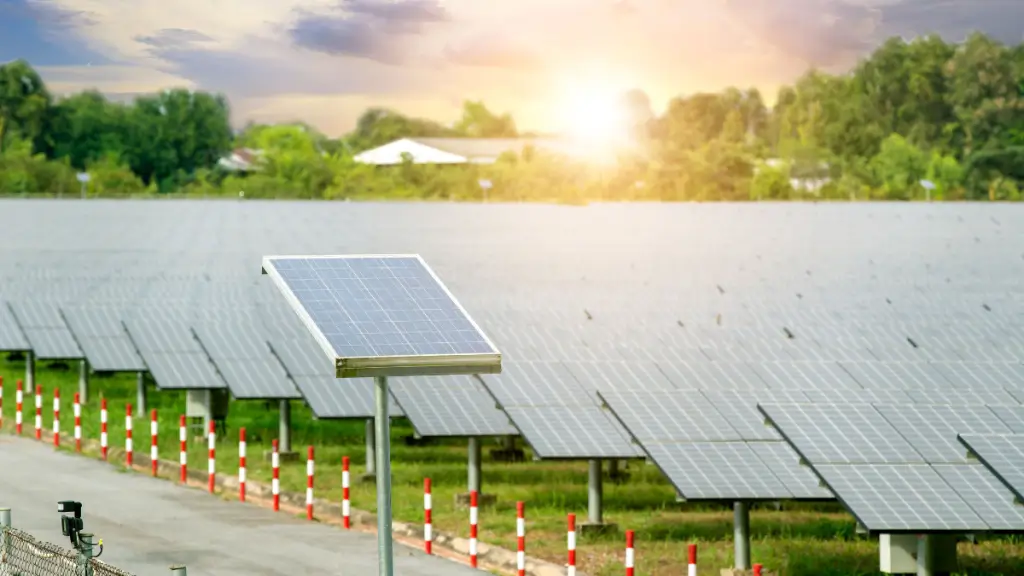Efficiency of Vertical Bifacial PV Systems in Solar Energy
With increasing demand for renewable energy, the efficiency of solar energy has been a primary concern of researchers and entrepreneurs. Among many improvements in photovoltaics (PV), the technology of bifacial PV has been a game-changer with increased energy harvesting capacity over monofacial panels. Later on, the vertical solar farms using the vertical bifacial PV systems became popular, particularly in areas where land limitations or snow cover present problems for traditional solar installations.
Within this in-depth guide, we discuss the Solar PV performance of vertical bifacial systems, including their strengths, uses, and limitations. Through the use of photovoltaic technology, vertical bifacial PV systems maximize light capture on both sides of the panel, maximizing energy output overall. This blog post is intended to offer concise, research-based information regarding how vertical bifacial PV systems are advancing the world toward sustainable energy production.

What Are Vertical Bifacial PV Systems?
A vertical bifacial PV system consists of solar panels installed in an upright position, allowing them to capture sunlight on both the front and rear sides. Unlike conventional south-facing rooftop or ground-mounted PV systems, which primarily absorb direct sunlight from one direction, bifacial panels maximize energy harvest by reflecting and utilizing diffuse sunlight as well.
The design is particularly beneficial for locations with seasonal variations in sunlight angles, snow-covered regions, and areas where agricultural activities coexist with solar energy generation (agrivoltaics). By increasing Solar PV performance, vertical bifacial PV panels make it possible to generate electricity efficiently even in non-optimal sunlight conditions.
How Do Vertical Bifacial PV Systems Improve Solar Energy Efficiency?
The efficiency of any solar panel is conditioned by a few factors and such factors are the orientation of the panel, the material used to make it and also the capacity of the panel to absorb sunlight. Vertical bifacial PV systems enhance solar energy efficiency through the following mechanisms:
- Dual-Sided Energy Absorption: The total energy output is increased by bifacial photovoltaic panels, which absorb light from both the front and back sides. Higher efficiency results from improved rear-side generation caused by reflection from nearby surfaces (such as snow, grass, and water).
- Reduced Land Footprint: Vertical bifacial PV systems maximise space utilisation, in contrast to conventional horizontal PV installations that need sizable land areas.They encourage photovoltaic innovation in areas with limited land because they are perfect for urban settings, highways, and agricultural areas.
- Improved Performance in Snowy Conditions: Traditional solar panels accumulate snow, reducing efficiency. In contrast, vertically mounted panels minimize snow accumulation and continue operating efficiently in winter.
- Lower Overheating Risks:Vertical bifacial PV systems allow for better air circulation, preventing overheating and maintaining high solar energy efficiency. Conventional solar panels experience thermal losses due to heat buildup.
How Do Vertical Bifacial PV Systems Improve Solar Energy Efficiency?
1. Agrivoltaics (Farming and Solar Coexistence)
Vertical solar farms can be utilized on agricultural lands so that crops can get the proper amount of sunlight, and electricity can be produced in solar panels. This dual-purpose use of land is an emerging photovoltaic innovation that supports food and energy security.
2. Urban Infrastructure and Highways
The land-scarce cities will be able to install bifacial PV on highways, railroads, and the surfaces of buildings, thereby ensuring the maximum utilization of energy without consuming new territory.
3. Cold and Snowy Regions
The fact that vertical panels do not gather snow makes it very suitable in a cold climate, and this guarantees continuous productivity of energy during winter seasons.
4. Floating Solar Farms
Deploying vertical solar farms on water bodies helps mitigate land scarcity while enhancing solar energy collection through reflection.
Challenges and Considerations
Although they have the benefits, there are some issues encountered in vertical bifacial PV systems:
- Greater Starter Costs: Initial costs such as set up and material costs may be higher than those in case of conventional solar farms.
- Site-Specific Performance Variability: The production of energy is variances upon the albedo (reflectivity) of the surrounding environment.
- Structural and Wind Load: Since the vertical solution is mounted vertically, sturdy mounting systems are necessary in order to handle strong winds and unfavorable weather situations.
Conclusion
The transition toward sustainable energy solutions demands continuous advancements in photovoltaic innovation. Vertical bifacial PV systems represent a significant leap in solar energy efficiency, particularly in land-constrained and snow-prone regions. By leveraging bifacial PV technology, solar farms can achieve higher Solar PV performance while ensuring space optimization and resilience in varying environmental conditions.
As more research and real-world applications validate their benefits, vertical solar farms will likely play a crucial role in shaping the future of renewable energy. Both on a large scale utility front and on an urban energy front these systems provide an exciting platform to a more energy efficient, and more sustainable solar powered future.
Frequently Asked Questions (FAQs)
Bifacial PV panels can increase energy yields by 10% to 30%, depending on installation height, surface reflectivity, and environmental conditions.
Maintenance is generally lower than conventional panels since vertical placement reduces dust accumulation and snow buildup.
Yes, they can be integrated into residential fences, balconies, or building facades to maximize space efficiency while generating solar energy.
They optimize land use, reduce environmental impact, and improve energy generation efficiency, making them a sustainable alternative to traditional solar farms.
Like conventional PV panels, bifacial modules typically have a lifespan of 25 to 30 years with proper maintenance.












